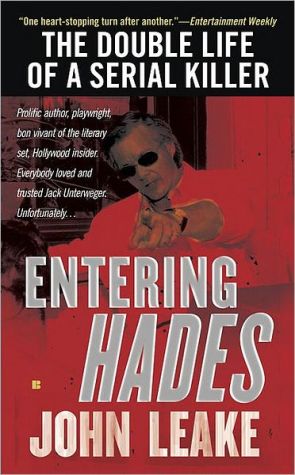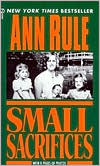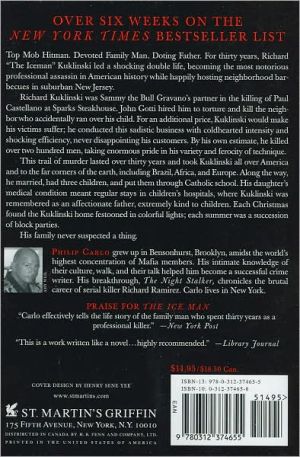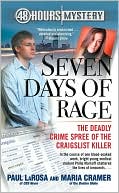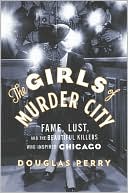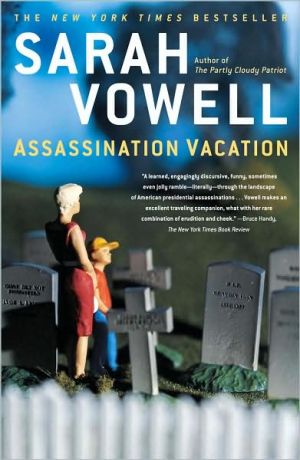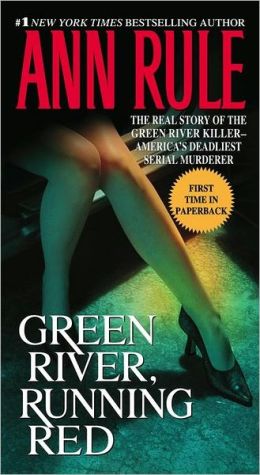Entering Hades: The Double Life of a Serial Killer
True crime that's “too wild even for fiction.”( PHILADELPHIA INQUIRER)
Search in google:
True crime that's “too wild even for fiction.”( PHILADELPHIA INQUIRER) The Barnes & Noble Review Henry David Thoreau once remarked that "the savage in man is never quite eradicated." With his first book, John Leake has provided us with haunting proof that to disbelieve Thoreau is folly, and sometimes a calamitous blunder -- as in the case of Austrian intellectuals who advocated for a convicted murderer's early release. Entering Hades: The Double Life of a Serial Killer is a clear-eyed, well-documented investigation of the fantastically deceptive life of the border-crossing psychopath Jack Unterweger.
Entering Hades The Double Life of a Serial Killer \ \ By Leake, John Farrar, Straus and Giroux Copyright © 2007 Leake, John\ All right reserved.\ ISBN: 9780374148454 \ \ \ Chapter 1 On July 11, 1991, a solar eclipse occurred in the sky over Los Angeles. At 10:12 a.m., the moon began to move in front of the sun, and by 11:28 it covered 69 percent of it. That morning, a couple of men and their children drove up to Corral Canyon Road in Malibu, northwest of the city, to watch the event.\ The Malibu hills are a landscape of rugged beauty, hostile to residential development. During the dry season the resinous brush, desiccated by the Santa Ana wind, sometimes sparks into swift-moving conflagrations that incinerate everything in their path. About two miles inland, an old fire road branches off to the right of Corral Canyon Road and ascends a steep hill. With its panoramic view and isolation, the grassy mesa at the top draws the occasional couple seeking the thrill of sex under an open sky. A few empty wine bottles and discarded underwear bear witness to their encounters.\ The men and children were seeking the mesa’s high vantage point to watch the eclipse, but as they reached the top, they were too horrified by what they saw lying on the ground to pay attention to the sky. When they called the L.A. County Sheriff’s Department at 11:15 a.m., the first man to talk saidhe’d discovered a dead body, but as he started to give directions to its location, he became upset and started cursing. A calmer man then got on the phone and described where the body lay, and a couple of hours later, Deputy Sheriff Ronnie Lancaster was directed to the scene.\ A cheerful native of Amarillo, Texas, Lancaster had seen much of the evil that men do, but he seldom allowed it to put him in a bad humor. Bodies shot and stabbed were part of the territory, and like all good detectives, he’d trained his mind to view them as evidence, not as the personalities they once were. The one thing he’d never gotten used to was decomposition. When the call came in about a murdered woman off Corral Canyon Road, Lancaster didn’t ask for a description of the crime scene, as he always preferred to approach it without preconceived notions. But he did have one question: “Is it a decomp?”\ “Yes, it is.”\ “Oh, man,” he said to his partner. “It’s a decomp. There’s gonna be maggots, and that means I’m gonna have nightmares.” They arrived at the base of the fire road at 2:45 p.m.—the hottest time of the hottest day he could remember. Reaching the top of the mesa soaked in sweat, he found the area cordoned off with a group of sheriff’s deputies and park rangers standing around. Deputy Knudson, the first to have arrived at the scene, filled them in.\ “I got the call at 11:51 and headed here. An Aero unit flew over before I arrived and directed me to the site. The guys who found her called the Malibu Station, but they didn’t say who they were or wait for me to get here. The decomp is advanced, but you can see from her breasts she’s a female.”\ The heavy-set corpse was lying on its back, twenty yards west of the dirt road, underneath a laurel sumac shrub. Her face was obscured by maggots streaming out of her nose, mouth, eyes, and ears. Her T-shirt was hiked up to her shoulders, exposing her bloated belly and breasts. Around her neck was a tightly knotted bra. Otherwise she was clothed. The pockets of her blue jeans were turned out; no I.D. was present.\ “Boys, we’re gonna solve this one!” Lancaster exclaimed. “This is the work of a boyfriend or husband; all we gotta do is find him and case closed.”\ “What if it’s a hooker?” his partner asked.\ “What would a hooker be doing up here? They take care of business a block or two from where they get picked up, and we’ve gotta be twenty-five miles from where the nearest streetwalker would be.” The inspectors continued working the crime scene, and at 5:20 p.m., the coroner recovery team arrived to collect the body.\ Lancaster was glad the day’s work was ending. He knew he wasn’t done yet—that he’d have to go over the whole thing again with a forensic pathologist. But at least he could take a break from it. He walked over to the edge of the hill, to where the fire road began its descent to Corral Canyon Road. The view of Santa Monica Bay was spectacular, and for the first time that day he thought about the beauty of the landscape. He’d always associated a pretty countryside with the feeling of peace. To have committed such a horrible crime in such a lovely place seemed especially perverse.\ That night he had nightmares, and the next day, still feeling haggard, he bumped into Lieutenant Christianson at the Homicide Bureau.\ “Just heard from the coroner. They fingerprinted that girl from Corral Canyon Road, and guess what? She is a prostitute. Nice call, Lancaster.”\ “You’ve gotta be kidding!”\ “She’s got numerous arrests on her record.”\ “Well, what the hell was she doing up there on that hill?”\ “That’s for you to find out. You can start with the coroner. The autopsy’s tomorrow morning at eleven o’clock.” Autopsies didn’t bother him too much, though it sometimes troubled him when a victim stared at him. A dead man’s eyes don’t close, and they may catch you in their gaze. Sherri Long didn’t have eyes to stare at him because they’d been eaten by maggots. In their place were empty black orbits. Lancaster felt his knees go weak as Dr. Ribe opened her skull to reveal “a large seething central mass composed of several thousand active maggots, mostly large.” They had devoured all of her brain except “50 cc of pale gray soup,” which was collected for toxicology, as well as a few live specimens of the larvae. From their species and length, a forensic entomologist could deduce how long the victim had been lying in the place where she was found, and if she had first lain somewhere else.\ In Dr. Ribe’s estimation, the victim had been dead four to seven days. “From the anatomic findings and pertinent history,” he ascribed the death to “ASPHYXIA due to or as a consequence of LIGATURE STRANGULATION.” To Deputy John Yarborough, the girl strangled with her bra in Malibu sounded familiar, as he’d recently read LAPD teletypes about prostitutes who’d been murdered in the same way downtown. He showed the printouts to Lancaster, who contacted Detective Fred Miller at LAPD Homicide. When Miller heard the story of the girl murdered in Malibu, he figured the killer he’d been hunting had struck again.\ The killer had struck first on the night of June 19, 1991. Twenty-year-old Shannon Exley was popular with the truckers who delivered groceries to the produce district off Seventh Avenue in downtown L.A. They liked her blond hair and youthful looks. Performing for them was rough and dirty work, but she needed the money to support her crack habit. On the evening of June 19, 1991, she called her father before she went to work and told him that she was trying to get her life in order.\ Her last customer picked her up on Seventh sometime after midnight and drove east, across the L.A. River to the Girl Scout Center on Seventh and Fickett. In the vacant lot behind it, surrounded by eucalyptus trees, no one saw his car or heard her screams, so he could have taken all the time he wanted with her.\ The location indicated he had planned the killing, because it wasn’t a place where Seventh Avenue hookers turned tricks. Normally they drove only a block or two with their customers and parked in the neighboring warehouse district. Shannon would not have proposed driving to an isolated place, miles from her corner. The killer must have scoped it out in advance, because he wouldn’t have spotted it at night. From where he picked her up, he knew where he was taking her, and when to slow down for the right turn into the narrow lane that dead-ended next to the wooded lot.\ The killer had strangled her with her own bra. Detective Miller knew of prostitutes getting manually strangled, beat up, shot, and stabbed, but he’d never heard of a hooker strangled with her own bra, the bra left tightly bound around her neck. Not only was it kinky, it appeared to have been practiced. Miller sensed that whoever had murdered Shannon Exley had probably murdered women before, and would probably do so again. Miller had known from a young age that he wanted to be a detective. Raised in San Antonio, Texas, he moved with his family to L.A. when he was in high school. After a stint in the U.S. Army, with a tour of duty in Vietnam, he joined the LAPD. Those were the days of the television series Dragnet and Adam-12, when its officers had a reputation for being the best in the world. Only the toughest and smartest cops could police a city like Los Angeles, with its giant size, ethnic complexity, large amount of crime, and chronic shortage of police manpower.\ At the downtown Robbery and Homicide Division, Miller had investigated cases with legendary detectives such as John “Jigsaw John” St. John, Badge Number One. By the summer of 1991, he’d probably worked on or been privy to as many serial murder investigations as any cop in the country. Over the years he’d supplemented his experience by reading the literature on serial murder that came out of the FBI, and he attended its seminars in L.A. He believed the most important lesson to be drawn from the analysts at Quantico was this: a good homicide investigator doesn’t wait for the pattern to emerge that proves separate murders are the work of the same killer, but looks for signs that any murder is the work of a man who will do it again. By recognizing the signs and staying in contact with police divisions throughout the city, a detective could get onto a killer’s trail quickly.\ Miller figured the world’s oldest profession was also its oldest target for men who kill for pleasure. As purveyors of sex for money, prostitutes are ready-made victims for sexual sadists. In the modern, car-driven world, they are also the only women in society who routinely get into the cars of strangers. One of the biggest cases of Miller’s career was a prostitute strangler who ran amok in the mid-1980s. For two years, every time a woman was murdered and dumped outdoors, Miller examined the crime scene to determine if it was the work of the same hand. It was painstaking work, with days of talking to possible witnesses and nights of surveillance. But Miller loved the challenge, above all the intellectual challenge. It was like a game of chess—the city its board—comparing, calculating, connecting. He never forgot the adrenaline rush when he finally arrested the man he’d hunted for so long. In April 1989, Louis Craine was convicted of murdering four women.\ In June 1991, Miller was head of the Homicide Special Section—“special” because it worked on complex cases requiring attention over potentially long periods of time. Every morning he came into his office on the third floor of the LAPD Parker Center and read teletype reports of homicides from all over the county. On Monday morning, June 24, 1991, he saw a report on the Exley murder. Detectives in the Hollenbeck Division, east of downtown, were investigating it after she’d been found the previous Thursday. Miller contacted them to learn more about the case.\ Girls picking up litter in the lot behind the Girl Scout Center on the morning of June 20 found the body. She was lying on her belly, nude except for her T-shirt hiked up over her breasts and a pair of blue socks. The rest of her clothing was missing. No I.D. was present, but taking her fingerprints at the coroner’s revealed her identity and her record of arrests for prostitution. A follow-up investigation indicated she’d recently been working on the corner of Seventh and Towne.\ Miller told the Hollenbeck detectives about his concern that Shannon Exley’s murderer might be the sort of man who would kill again, which meant that they probably wouldn’t find him among her social circle. Maybe the killer had been her customer before, but it was unlikely she knew him. That’s what made investigating the murder of a hooker so tough. In 1991, L.A. County had 4.5 million male inhabitants, plus thousands of tourists, plus the truckers from all over the country who made deliveries to the city. Shannon Exley could have gotten into the vehicles of fifteen different strange men on the night she died.\ A week later, Miller saw a teletype about a dead girl found in a freight company parking lot on Myers Street in Hollenbeck, and contacted the same detectives working the Exley case. A homeless man foraging for firewood in the industrial zone along the L.A. River had found her lying on her back underneath a big rig trailer with a bra tightly knotted around her neck. Most of her clothing was missing; a sock, \ T-shirt, and hypodermic syringe lying near her body were the only articles at the scene. Her fingerprints and a follow-up investigation revealed her story.\ Thirty-three-year-old Irene Rodriguez had arrived in L.A. in April 1991 on a Greyhound from El Paso, Texas, where she’d been living with her common-law husband and their four children. Child-bearing hadn’t altered her girlish figure—maybe her heroin habit had kept her slender—and her face had fine features, with large, widely spaced brown eyes. She had visited her parents in L.A. just before Mother’s Day, but instead of returning to her husband and children in El Paso, she stayed, turning tricks to support her drug habit. Her roommate saw her for the last time at 8:00 p.m. on Friday, June 28, as she was leaving the apartment to go to work on Seventh.\ “He’s done it twice,” Miller told the Hollenbeck detectives. “I wouldn’t be surprised if he does it again this coming Fourth of July weekend. Keep a watch on your area, and we’ll put Seventh under surveillance.” \ Excerpted from Entering Hades by John Leake. Copyright © 2007 by John Leake. Published in November 2007 by Sarah Crichton Books, a division of Farrar, Straus and Giroux, LLC. All rights reserved. \ \ Continues... \ \ \ \ Excerpted from Entering Hades by Leake, John Copyright © 2007 by Leake, John. Excerpted by permission.\ All rights reserved. No part of this excerpt may be reproduced or reprinted without permission in writing from the publisher.\ Excerpts are provided by Dial-A-Book Inc. solely for the personal use of visitors to this web site. \ \
\ Robert MacFarlaneLeake has spent years interviewing those involved with the Unterweger case and combing the millions of words that it generated, both juridical and journalistic. As a result, he is able to tweezer away the layers of Unterweger's deceptions. Most important, he seems to be impervious to Unterweger's charm. There is no evidence here of a fascinated respect for this vile man, only of a fascinated curiosity…John Leake has written the definitive book—dispassionate, superbly detailed—on Jack Unterweger. Of its subject, no more now needs saying, beyond the words with which Leake ends his story, citing the wife of the Vienna detective who spent years unraveling the case: "Thank God, he's dead."\ —The New York Times\ \ \ \ \ Publishers WeeklyAustrian Jack Unterweger was many things to many people-celebrated author, well-known bon vivant and loyal friend. To prostitutes plying their trade in Vienna, he was a ruthless killer. When he hanged himself in his jail cell after being convicted of murder in 1994, Unterweger brought to a close a story of cold-blooded murder that crossed social boundaries and international borders. As told in page-turning, savagely intimate style in this debut by translator and editor Leake, Unterweger's vicious killing spree comes alive in horrifying detail. Released from prison in 1990 for an earlier murder, Unterweger quickly began killing again. Passing himself off as a journalist, he took to calling the relatives of his victims. "At 5:00 p.m. the same voice called back and said, 'They lie in the place of atonement, facing downward, toward Hades, because otherwise it would have been an outrage.' " His 1991 murder of a hooker in Los Angeles proves his undoing as the American police, working with Austrian authorities, track him down. Leake gets bogged down in the minutiae of the 1994 trial in Vienna, but this is a minor glitch in an otherwise cracking good true-crime tale that, while demonstrating respect to the victims, conjures a character in Unterweger that readers will not soon forget. (Nov.)\ Copyright 2007 Reed Business Information\ \ \ The Barnes & Noble ReviewHenry David Thoreau once remarked that "the savage in man is never quite eradicated." \ With his first book, John Leake has provided us with haunting proof that to disbelieve Thoreau is folly, and sometimes a calamitous blunder -- as in the case of Austrian intellectuals who advocated for a convicted murderer's early release. Entering Hades: The Double Life of a Serial Killer is a clear-eyed, well-documented investigation of the fantastically deceptive life of the border-crossing psychopath Jack Unterweger.\ I am an ex?bank robber who served nine years in prisons all across the country, so I have met my fair share of brazen criminals. But I have never heard about anyone with Jack Unterweger's unbridled audacity. Even seasoned ex-con friends of mine found it difficult to believe Jack's story wasn't fiction.\ But Leake is more than convincing, having made good use of a mountain of source material: court transcripts, investigation reports, interviews with homicide detectives in three different countries, interviews with girlfriends, lovers, Jack's patron, advocates, critics, and, most of all, Jack's prodigious words, from his books, plays, magazine and radio interviews, letters, diaries, and his journalism notes. And, fortunately for the reader, Leake arranges the voluminous facts of the case into very brief chapters (91 in all), which creates the palpable tension of the classic "cat and mouse" thriller.\ Entering Hades opens with the multiple murders that shocked Vienna in 1991, but the seeds of the tale are in the 1975 conviction of Jack Unterweger (referred to throughout as "Jack") in the brutal killing of 18-year-old Margret Schafer.\ In prison, Jack completed correspondence courses on literature and narrative writing and received his highest grades in religion. He submitted children's stories to the country's venerable Austrian Broadcast Corporation (ORF), and over time about 50 of Jack's stories were broadcast by the network. Eight years after his incarceration, Jack's autobiographical novel was serialized in a prestigious literary magazine. This is how intellectuals became aware of him. Soon he was their poster boy of the successfully rehabilitated criminal, their cause célèbre.\ Jack 's new advocates worked tirelessly to get him released. He had very influential people appealing to Austrian president Rudolf Kirchschlager to set the incarcerated writer free, including a Nobel Prize winner in literature, a senior ORF correspondent, and many ranking officials with the Justice Ministry's Section of Penal Executions, most surprisingly even the then-director, who visited Jack in prison. On the strength of these recommendations from elite citizens, Unterweger was released early from his life sentence, after serving only 15 years. He proceeded to write two books and produce two plays. By all accounts he was a successful freelance writer, with many female friends, a sports car, and a cottage in Italy.\ Then, in 1991 -- not long after Jack's return to freedom -- a serial killer began murdering Viennese prostitutes. The press nicknamed the strangler the Vienna Woods Killer, because the women were mostly found in the Wienerwald, a large forested area in and around the Austrian capital.\ Jack decided to cover the story for ORF. Three days after the second body was found, he interviewed Max Edelbacher, Vienna's chief of police, who told him there were no leads in the case. "It must be frustrating for an officer to, so to speak, run into a dead end," Jack said. Jack also interviewed frightened prostitutes who continued to work despite the risks. In one ORF broadcast he bluntly asked one sex worker: "How would you protect yourself?"\ Jack eventually traveled to Los Angeles to report on the underbelly of that city. He rode along with an LAPD police officer and interviewed drug-addicted hookers -- right around the time a new serial killer began murdering them.\ By all accounts Jack was exceptionally charming during this sojourn, but his few pushy attempts to get his life story turned into a Hollywood film did not succeed. So he returned to Vienna with more ORF material.\ Like Jean Valjean in Les Misérables, Jack had his obsessive Inspector Javert, a certain Inspector August Schenner of Salzburg. Schenner had suspected Jack of killing another woman before he went to prison for murdering Margret Schafer. The detective didn't have enough proof to charge Jack then, but years later, when the Vienna murders became a national story, Inspector Schenner was able to finally convince the Vienna police to take a serious look at Jack.\ It was Vienna police chief Edelbacher -- formerly one of Jack's interview subjects -- who informed Jack that he was a suspect in the murders and asked him to account for his whereabouts on the nights the women were slain. These alibis proved to be patently false. Knowing that Jack had traveled to Los Angeles, Edelbacher contacted the LAPD to see if they had similar murders in their city while Jack was in town. Sure enough, there were three matches. As law enforcement agencies began comparing notes, one fact struck everyone: Jack had been present in six cities on the day prostitutes were murdered in similar fashion to the way he killed Margret Schafer in 1974 -- and all his alibis were lies.\ Though the police only had circumstantial evidence linking Jack to the murders, the decided nonetheless to try and convict him. But Jack was tipped off to his imminent arrest, so he fled to Miami. From Florida he claimed to his supporters that the police were under pressure to find the killer and had unjustly focused on him because of his past. He promised to clear his name from afar. But his life unraveled quickly from that point: arrested by U.S. marshals, Jack was extradited to Austria, where he was found guilty after a two-month trial. All told, Jack Unterweger is alleged to have killed 11 women: 3 in the U.S., 8 in Austria.\ The story of Jack's chillingly despicable life is pregnant with ready-made themes for the writer's use. But rather than pontificating about a moral, Leake does a brilliant job of staying out of the way of his story, preferring to let the reader form his or her own judgments. He does not -- as we might -- philosophize about women who love the murderers of other women, or ponder the question of why leftists seem to readily romanticize violent prisoners. (Norman Mailer once petitioned, along with other prominent literati, for prison writer Jack Henry Abbott's early release. Abbott promptly killed a Puerto Rican waiter for a perceived slight.)\ Jack Unterweger claimed that his self-analysis through writing freed him from the pressures of his childhood -- namely, his mother's abandonment of him at age two and his subsequent abuse at the hands of his grandfather. Animated by wispy hope and a profound ignorance of complicated rage, Arno Pilgram, a university lecturer of criminal sociology, wrote to President Kirchschlager on Unterweger's behalf: "Insofar as personal development is evident in literature, Jack Unterweger has fully realized it."\ Nietzsche optimistically observed that only where there are tombs are there resurrections. Jack's noble-hearted supporters embraced this virtuous notion. Unfortunately, in this case, they wrongly ignored the more durable truth -- that in most crypts, one finds only decomposing corpses. --Joe Loya\ Joe Loya is an essayist, playwright, and author of The Man Who Outgrew His Prison Cell: Confessions of a Bank Robber.\ \ \
